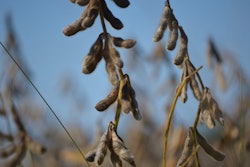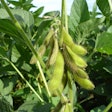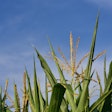
The U.S. Grains Council (USGC) is exploring opportunities to export U.S. feed grains into South Africa due to drought conditions impacting corn production in the region.
Drought conditions could reduce the South African corn crop by 20 percent, presenting short-term demand shortfalls in the region. The U.S. Grains Council (USGC) recently sent a team to South Africa to explore the situation firsthand and identify opportunities for exports of U.S. corn and sorghum.
“The impacts of drought are extending across east and southern Africa,” said Kurt Shultz, USGC senior director of global strategies. ”The drought and crop shortfall have caused grain prices to soar in East Africa and USGC is also exploring opportunities to export U.S. feed grains into these markets as a result.”
A drought in 2016 presented a similar dilemma for South Africa, typically a significant corn exporter. At that time, USGC successfully secured market access for U.S. corn to fill domestic demand gaps through outreach efforts that included back-and-forth trade missions with government leaders, millers, commercial grain traders and end-users. USGC also worked diligently with the South African government to eliminate biotech restrictions on corn imports from the United States, resulting in the South African government issuing permits authorizing imports of white and yellow corn.
As a result, South Africa purchased more than 350,000 tons (13.7 million bushels) of corn valued at $71 million and more than 170,000 tons (6.7 million bushels) of sorghum valued at $28 million during the 2015/2016 and 2016/2017 marketing years.
This year, South African farmers are expected to produce 11.9 million tons (468 million bushels) of corn, down from last year’s 15.6 million tons (626 million bushels). The subsequent shortfall will drive demand for imports of both yellow corn for animal feed and white corn for a staple food known locally as pap or mieliepap.
“South Africa is expected to import more than 500,000 tons (19.6 million bushels) of corn and we have seen 45,000 tons (1.7 million bushels) of U.S. sorghum exported to South Africa already for human consumption and brewing industry needs,” said Reece Cannady, USGC manager of global trade, who participated in the mission. “The Council will continue to monitor the situation to identify additional market opportunities.”
The team in May - that included Shultz, Cannady and Ramy Taieb, USGC director for the Middle East and Africa - met with the South African grain industry to explore both this market potential and also identify constraints, including logistical challenges for the flow of grain.
“Without regular shipments of grain between the United States and South Africa, introducing new feed ingredients like dried distiller’s grains with solubles (DDGS) or expanding existing sorghum sales is difficult,” Taieb said. “We will look more closely at the bulk and container markets to see if we can help create new avenues to trade.”
In addition to a shortfall of corn domestically, South Africa is an important supplier of grains to neighboring countries in the region. As a result, a decrease in South African exports will have a ripple effect in a region already facing challenges from robust population and livestock industry growth and limitations in local grain production and distribution.
USGC is employing funds from the U.S. Department of Agriculture’s (USDA’s) Agricultural Trade Promotion (ATP) program to launch a broader, two-year engagement in the region to expand opportunities for U.S. feed grain exporters. As this region continues to see growth in demand for meat, milk and eggs, USGC will work to identify and capture these pockets of opportunity for grain sales.


















